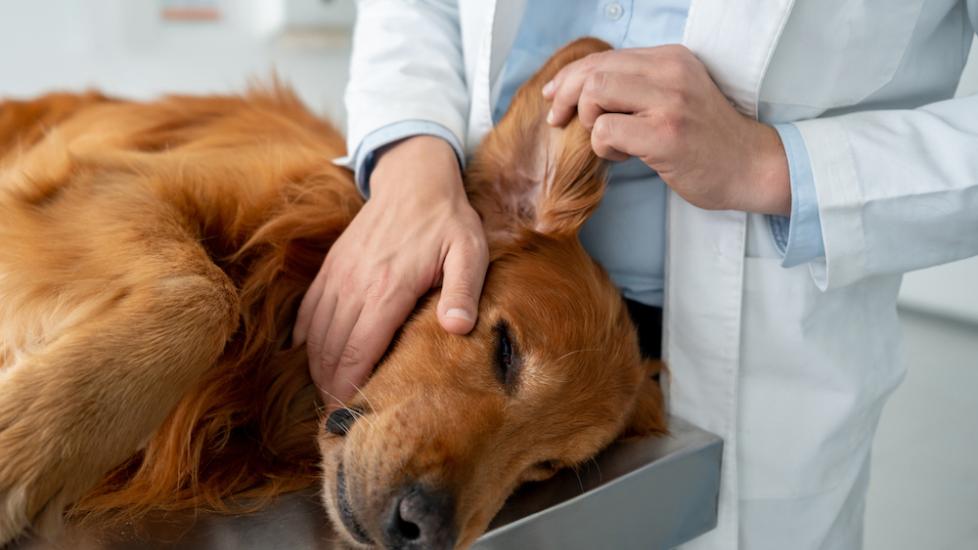The Silent Killer: Understanding and Preventing Ear Cancer in Our Canine Companions
A dog’s ears are more than just cute flaps that perk up at the sound of their name; they are intricate structures that play a crucial role in balance, hearing, and overall health. However, these sensitive areas can also be home to a deadly disease if left unchecked—ear cancer. As pet owners, it is our responsibility to recognize the signs, understand the risks, and take proactive steps to protect our four-legged friends from this silent killer. In this article, we delve into the world of ear cancer in dogs, exploring its causes, symptoms, diagnosis, treatment options, and preventive measures to ensure your beloved companion lives a long and healthy life.
Causes and Risk Factors
Ear cancer is typically classified as primary or secondary. Primary tumors originate within the ear itself, while secondary tumors spread from other parts of the body through the bloodstream or lymphatic system. The most common type of primary ear tumor in dogs is squamous cell carcinoma, which often affects the external ear canal. Secondary cancers affecting the inner ear may arise from melanomas, mast cell tumors, or even breast cancer metastasis.
Risk factors for ear cancer include age (older dogs are more susceptible), breed (certain breeds like Scottish Terriers have a higher incidence rate), sex (male dogs are generally at greater risk), exposure to environmental toxins such as pesticides and heavy metals, chronic inflammation due to infections or allergies, and genetics.
Symptoms to Watch For
Recognizing the early signs of ear cancer can mean the difference between successful treatment and a dire prognosis. Some telltale indications include:
- Persistent Itching: Your dog might scratch excessively at the affected ear(s), sometimes leading to self-trauma and injury.
- Discharge: A thick, foul-smelling discharge may accumulate inside the ear canal, indicating an infection or underlying problem.
- Head Shaking: Frequent head shaking or tilting could signal discomfort or loss of balance caused by an inner ear issue.
- Hearing Loss: Although not always present with primary ear tumors, hearing impairment can occur with advanced cases.
- Lump or Mass: Direct examination of the ear canal or imaging tests may reveal a visible growth or mass.
- Behavioral Changes: Dogs with severe pain or distress may become withdrawn, irritable, or exhibit changes in eating habits.
Diagnosis and Treatment
If you suspect your dog has developed ear cancer, it is imperative to consult with a veterinarian immediately. They will perform a thorough physical exam, including a close inspection of the ears, followed by diagnostic tests such as fine needle aspiration, biopsy, CT scans, MRI, and blood work. Once a definitive diagnosis is made, treatment plans are tailored according to the specific type and stage of the cancer. Options range from surgery (for localized tumors) to radiation therapy, chemotherapy, immunotherapy, or palliative care depending on whether the cancer is curable or incurable.
Prevention Strategies
Prevention is key when dealing with any form of cancer, especially one that is often asymptomatic until later stages. Here are some tips to help reduce your dog’s risk of developing ear cancer:
- Regular Check-Ups: Schedule routine visits with your vet so they can monitor your dog’s health and address any potential issues before they worsen.
- Proper Cleaning: Keep your dog’s ears clean and dry using appropriate cleansers designed for canines. Overzealous cleaning should be avoided as it can strip away natural oils and leave the skin vulnerable to irritation and infection.
- Safe Environment: Limit your pet’s exposure to known carcinogens like lawn chemicals, certain plastics, and cigarette smoke.
- Healthy Diet: Feeding high-quality food rich in antioxidants can support immune function and overall well-being.
- Genetic Considerations: If your breed is predisposed to ear problems, discuss preventative strategies with your veterinarian.
- Prompt Veterinary Care: Seek immediate attention for persistent ear infections or any concerning symptoms that could indicate something more serious.
In conclusion, staying vigilant about your dog’s ear health is essential in preventing the onset of potentially fatal diseases like cancer. By recognizing the warning signs, seeking prompt veterinary intervention, and following preventative guidelines, we can give our furry companions the best chance at a happy, healthy future alongside us.
